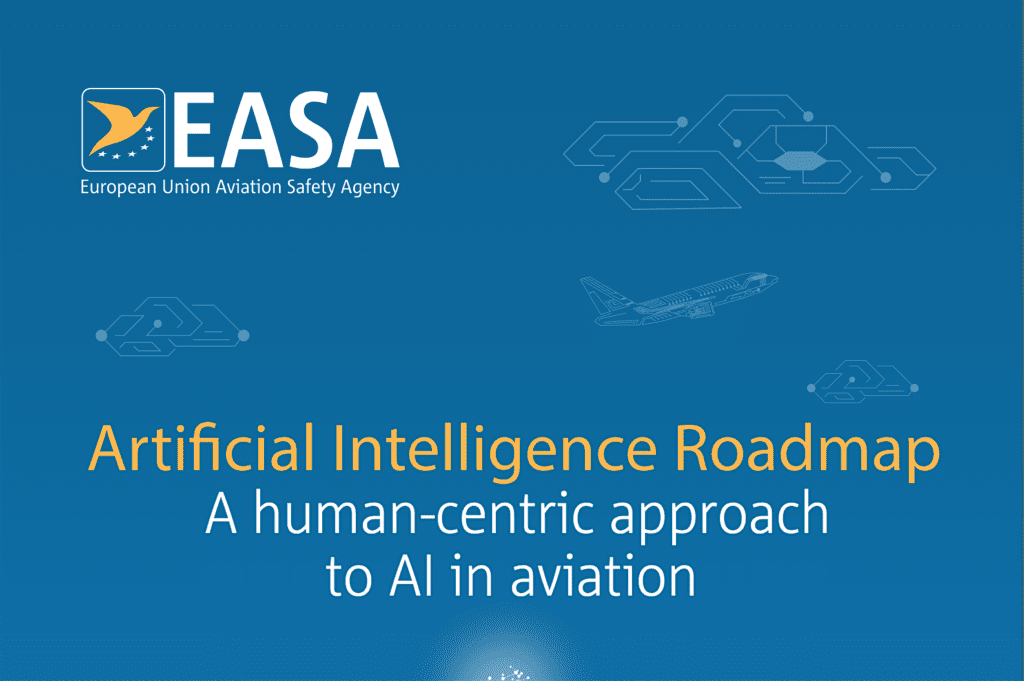
The European Aviation Safety Agency expects to certify the first integration of artificial intelligence technology in aircraft systems by 2025.
The European Union Aviation Safety Agency (EASA) has published its “Artificial Intelligence Roadmap” in anticipation of the first certification for the use of AI in aircraft systems coming in 2025.
EASA published the 33-page roadmap after establishing an internal AI task force in October 2018 to identify staff competency, standards, protocols and methods to be developed ahead of moving forward with actual certification of new technologies. A representative for the agency confirmed in an emailed statement to Avionics International that they have already received project submissions from industry designed to provide certification for AI pilot assistance technology.
“The Agency has indeed received its first formal applications for the certification of AI-based aircraft systems in 2019. It is not possible to be more specific on these projects at this stage due to confidentiality. The date in our roadmap, 2025, corresponds to the project certification target date anticipated by the applicants,” the representative for EASA said.
In the roadmap document, EASA notes that moving forward, the agency will define AI as any technology that “appears to emulate the performance of a human.” The roadmap further divides AI applications into model-driven AI and data driven AI, while linking these two forms of AI to breakthroughs in machine learning, deep learning and the use of neural networks to enable applications such as computer vision and natural language processing.
“In order to be ready by 2025 for the first certification of AI-based systems, the first guidance should be available in 2021, so that the applicant can be properly guided during the development phase. The guidance that EASA will develop will apply to the use of AI in all domains, including aircraft certification as well as drone operations,” the representative for EASA said.
Eight specific domains of aviation are identified as potentially being impacted by the introduction of AI to aviation systems, including the following:
- Aircraft Design and Operation
- Aircraft Production and Maintenance
- Air Traffic Management
- Drones, Urban Air Mobility and U-Space
- Safety Risk Management
- Cybersecurity
- Environment
- European Union Regulations
The roadmap foresees the potential use of machine learning for “flight control laws optimization, sensor calibration, fuel tank quantity evaluation, icing detection” to be among those aircraft systems where the need for human analysis of possible combination and associated parameter values could be replaced by machine learning.

The roadmap for EASA’s certification of AI in aircraft systems. Photo: EASA
EASA also points to several research and development projects and prototypes featuring the use of artificial intelligence for air traffic management already available. These include Singapore ATM Research Institute’s application that generates resolution proposals that can assist controllers in resolving airspace system conflicts. There is also the Single European Sky ATM Research Joint Undertaking’s “BigData4ATM” project tasked with analyzing passenger-centric geo-located data to identify patterns in airline passenger behavior and the Machine Learning of Speech Recognition Models for Controller Assistance (MALORCA) project that has developed a speech recognition tool for use by air traffic controllers.
Several aviation industry research and development initiatives have been looking at the integration of AI and ML into aircraft systems and air traffic management infrastructure in recent years as well. During a November visit to its facility in Toulouse, Thales showed some of the technologies it is researching and developing including a virtual assistant that will provide both voice and flight intention recognition to pilots as part of its next generation FlytX avionics suite.
Zurich, Switzerland-based startup Daedalean is also developing what it describes as the aviation industry’s first autopilot system to feature an advanced form of artificial intelligence (AI) known as deep convolutional feed forward neural networks. The system is to feature software that can replicate a human pilot’s level of decision-making and situational awareness.
NATS, the U.K.’s air navigation service provider (ANSP) is also pioneering an artificial intelligence for aviation platform. At Heathrow Airport, the company has installed 18 ultra-HD 4K cameras on the air traffic control tower and others along the airport’s northern runway that are feeding images to a platform developed by Searidge Technology called AIMEE. The goal is for AIMEE’s advanced neural network framework to become capable of identifying when a runway is cleared for takeoffs and arrivals in low visibility conditions.
As the industry moves forward with more AI developments, EASA plans to continually update its roadmap with new insights. Their roadmap proposes a possible classification of AI and ML applications separated into three levels based on the level of human oversight on a machine. Level 1 is to categorize the use of artificial intelligence for routine tasks, while Level 2 features applications where a human is a performing a function and the machine is monitoring. Level 3 is to feature full autonomy, where machines perform functions with no human intervention.
“At this stage version 1.0 identifies key elements that the Agency considers should be the foundation of its human-centric approach: integration of the ethical dimension, and the new concepts of ‘trustworthiness,’ ‘learning assurance’ and ‘explainability’ of AI,” the representative for EASA said. “This should be the main take away for the agency’s industry stakeholders. In essence, the roadmap aims at establishing the baseline for the Agency’s vision on the safe development of AI.”